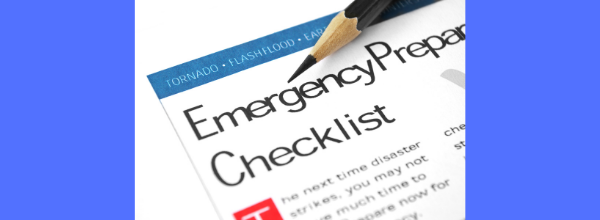National Emergency Preparedness Month

September 16, 2020 | Category: News
This September, celebrate National Emergency Preparedness Month with us! Preparedness month is a time for families, schools, businesses, and communities to assess their current safety measures and implement new measures or increase awareness. This month, we encourage you to follow these 4 steps from the Department of Homeland Security website for preparing your home or business.
First, make a plan for potential emergencies.
Have a discussion with your family, coworkers, or staff to plan for potential emergencies while everyone is present, and make sure that your plan is clear and easy to understand if you have young children. During this discussion, decide where you will meet in the event that your home or city must be evacuated and/or how you will get in touch with each other. You should also discuss where important emergency supplies – like a fire extinguisher – are located.
Second, assemble a go-bag so you are ready to evacuate your home quickly.
Remember to include a 3 days’ supply of non-perishable food and water for each person as well as any necessary medications. One of our subscribers suggests that you also include a list of all doctors that you visit including their addresses, phone numbers and specialties and a document including an emergency contact and the location of important papers such as a living will. Having a go-bag will allow your family to be out the door quickly in the case of a fire or flood and will prevent you from having to return before it is safe to do so. Visit https://www.ready.gov/kit for a more complete list of suggested items for your go-bag.
Third, prepare your home for disasters.
When moving to a new area, consider browsing local news or talking with neighbors to determine which disasters your neighborhood is prone to. Once you have this information, you can begin preparing your home or business before disaster strikes. For example, if you live in an area that experiences seasonal hurricanes, you can be sure to secure items like deck furniture or umbrellas and trim tree branches that hang over your house, building or car. These simple measures may prevent damage to your property in the case of heavy winds. You can also use this information to choose the best insurance coverage for your area.
Fourth, teach young children about preparedness.
It’s never too early to discuss preparedness with your family. Teaching your children about what to do in an emergency and practicing your family plan will help them stay calm during an actual crisis. It’s also important to discuss following the emergency policy at school or in public and when it’s a good idea to call 911. Designate one day a year to practicing your emergency protocol and allow your children to ask you questions.
Use this month to ramp up your emergency measures and stock up on supplies to keep you and your family safe. Share your emergency preparedness measures with us on social media using the hashtag #HealthOnWheels and feel free to browse our information for additional emergency-related tips. Finally, help us manage the COVID-19 crisis responsibly by continuing to wear a mask and socially distance in public. Preparedness is a community-wide event!
